Schiave Bianche Violenza in Amazzonia AKA White Slave (1985)
| director: | Mario Gariazzo |
| release-year: | 1985 |
| genres: | horror, sexploitation, mockumentary |
| countries: | Italy |
| languages: | English |
| fests: | Sexploitation Horror Fest (2022) |
Italian sexploitation horror mockumentary, in English, starring a French woman, and taking place in South America and London.
The first ten seconds include the line: "You're saying that, since he was an Indian, he refused the world of the white man?" This is a film about the Amazon, which is in South America. So, let's see about this.
The opening credits roll over beautiful scenes of African (!?) nature and wildlife, such as the hippopotamus, apparently shot on a janky VHS camcorder. Not all of the film looks like it was filmed on a camcorder, but... plenty of it. Shots of random forest animals are periodically spliced in to the film whenever they need to pass the time. Jaguars eating deer, toucans in trees, whatever.
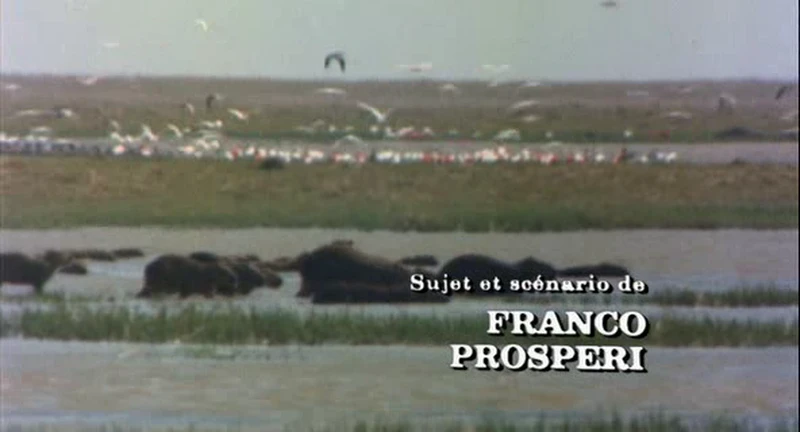
It opens with our star on trial in a tiny room with cheap furniture, where she recounts, via flashback, the tale of going to visit her family in the Amazon after graduating from high school. This gives them a convenient excuse to use voice-over for literally everything.
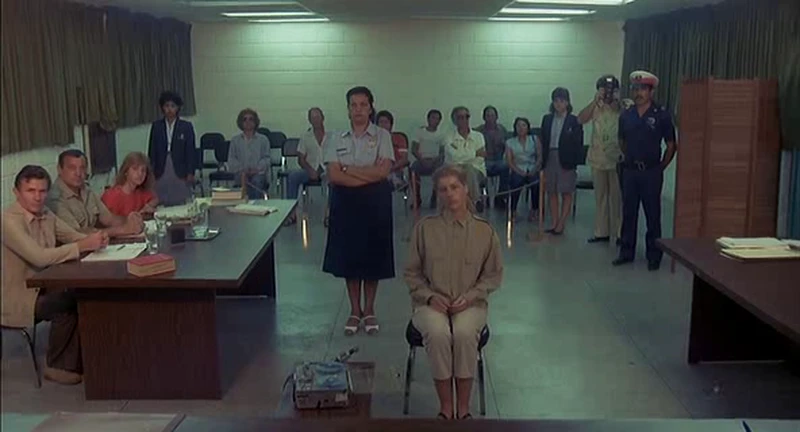
The family's helicopter pilot announces his intention to visit because "she's a real young lady" and "we don't get a chance to see many pretty blondes around here," and then her parents awkwardly tell each other their entire family history through forced dialog while puttering down the Amazon river on a houseboat.
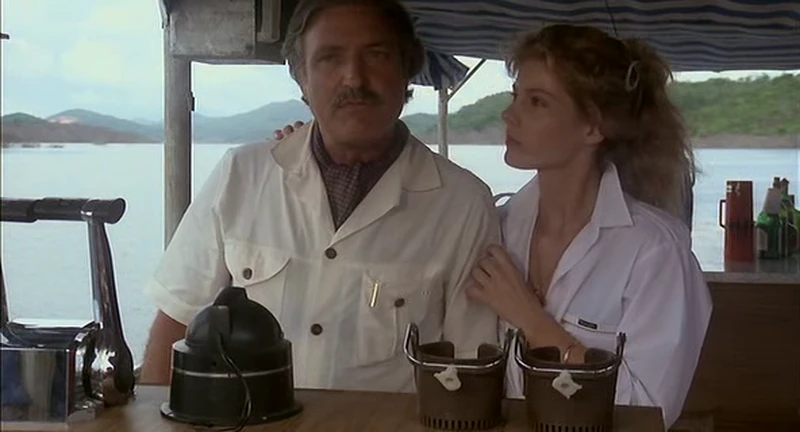
Bam! Poison darts, blood, screaming. Her parents are very, very dead. "The Indians," in loin cloths, board the boat and take the girl (and her parents' heads). One of the tribesmen cuts some slugs off of a tree, chews them, and treats her wound with the slug goop.
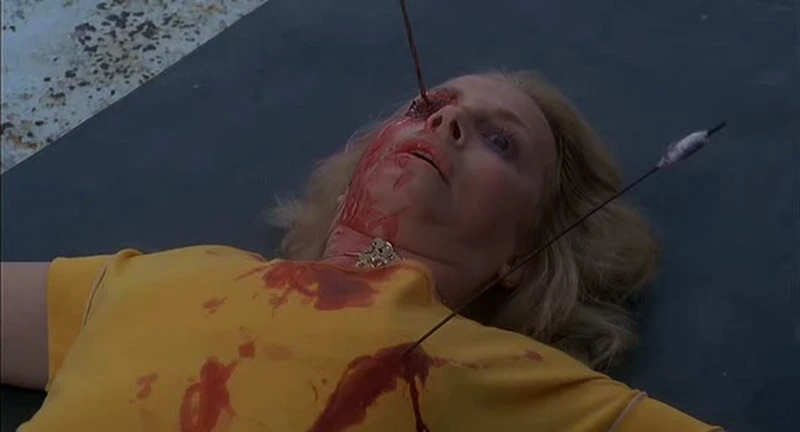
A rival local tribe, cannibals with faces painted pure white, attack and attempt to steal the girl. No luck, her initial captors win. More decapitation. This is not, and will not become, relevant to the plot.

They get her back to their village, strip her naked (as she shall remain for the rest of the film), and sell her in exchange for a goose, a baby capybara, and a turtle. They rape their new slave, while her voiceover explains their inner thoughts despite her obviously not understanding their language.
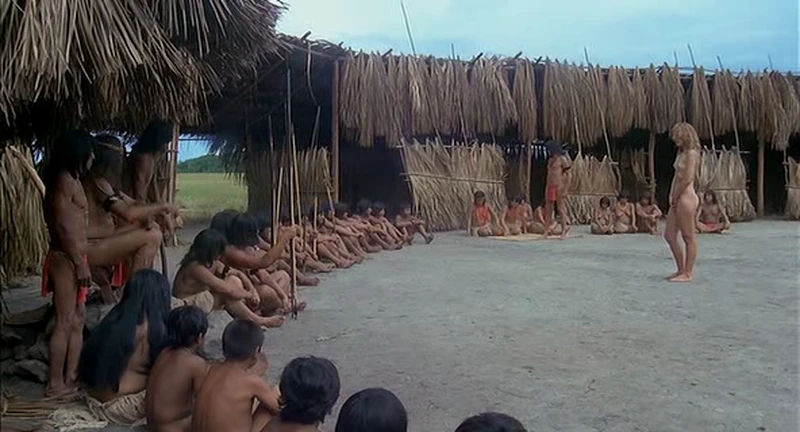
She runs away and finds a monkey's paw -- not the magical wishing type, just the remains from a jaguar's snack -- and is instantly recaptured for another rape scene, not five minutes after the first one.
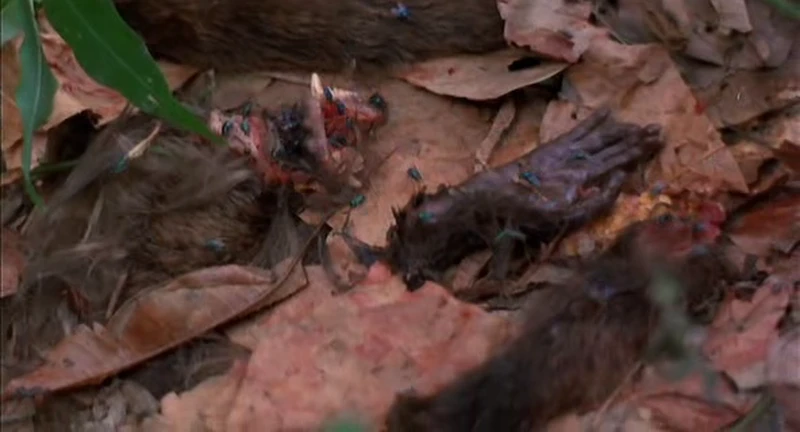
She confesses that she was growing quite fond of her main captor, despite that he viciously murdered her family and desecrated their remains just a few days ago. And, suddenly, a tribeswoman starts speaking broken English to her. How convenient for the plot development!
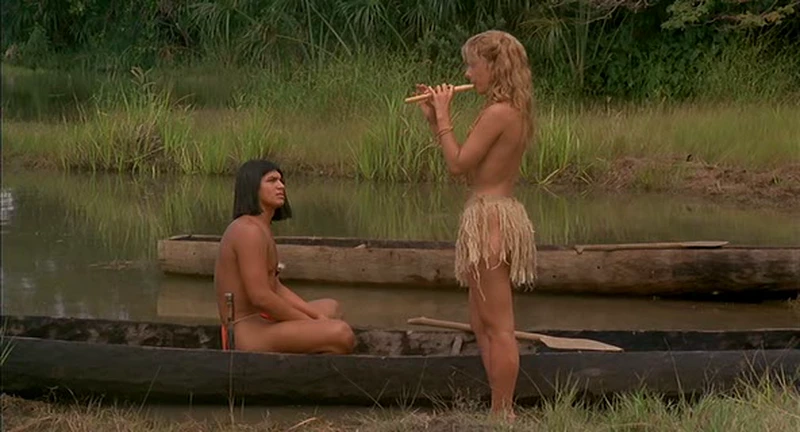
She recounts a story of "one night," though the scene is shot outdoors, midday, with the sun high in the sky. Probably for the best, since camcorders weren't noted for their low-light performance. Some warthogs swim by in the river. I'd like to imagine that they have been swimming ever since they departed Africa.
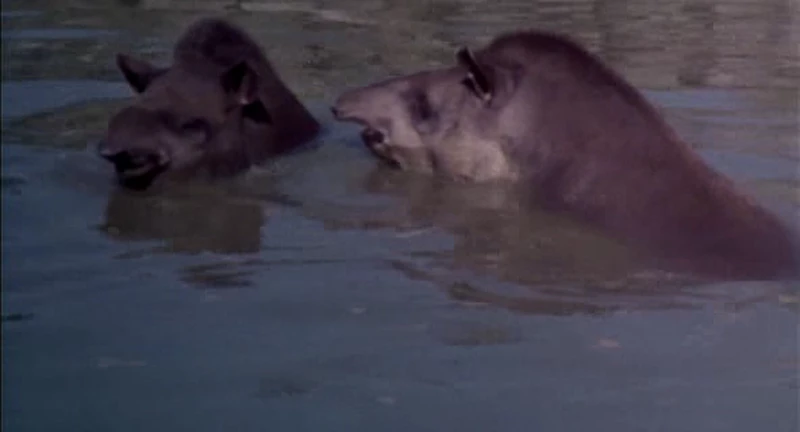
And so it plods along drearily, one short tribe-humanization story after another, as she learns to love her kidnappers and they learn to respect her. Also: a helicopter chase involving machine guns and throwing bombs into the jungle. It turns out the white man is evil after all. Finally, the big twist: it was white men who murdered her parents all along, framing the natives so they will be killed and their land can be taken! Probably something to do with the garbage her dad was spewing at the beginning; something about a coffee plantation, maybe?

All the tribe people are murdered except the main one, who she falls in love with. They kayak around in logs while a soundtrack of pan-pipes plays. The court (remember this whole movie is a flashback) is particularly interested in explanations of her love life, but she just wants to talk about how she borrowed some poison arrows, walked back to her family home, shot the evil white people who betrayed her parents, and lopped their heads off with a hatchet. This is apparently what the trial is about, we now learn.
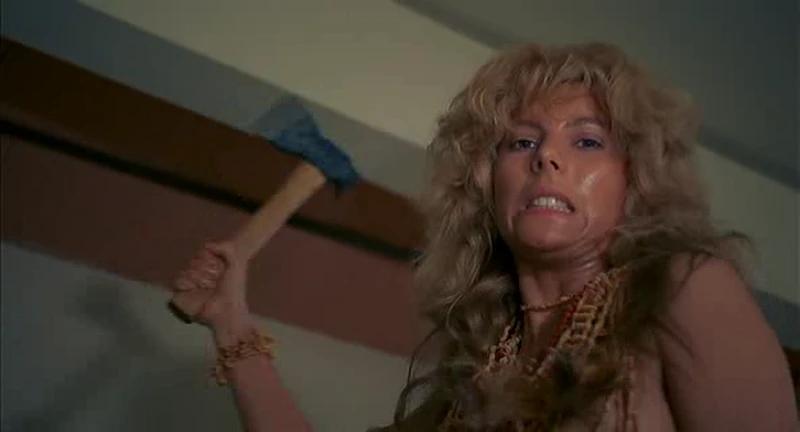
We end back in the trial, which doesn't seem to follow any rule of law, nor any sense. She's apparently convicted to 8 years in an asylum, but the film doesn't consider that particularly important so they just skip ahead to her living happily ever after with a husband and child, but secretly miserable because of her fond memories of the tribesman she loved. Not at all because her whole family was butchered and she spent a decade imprisoned, apparently.